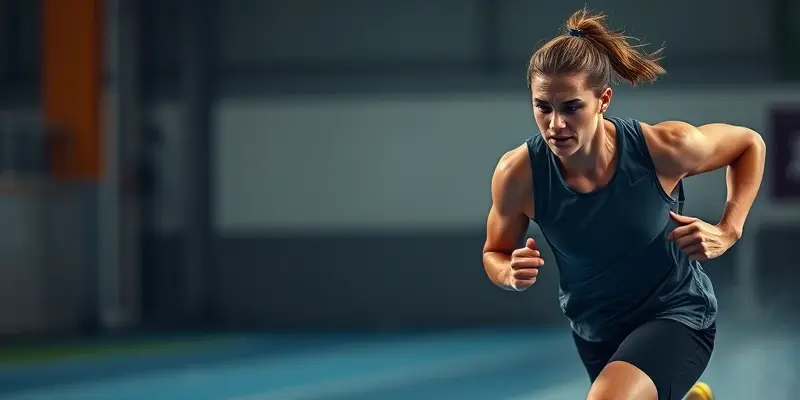Recover Stronger and Prevent Injuries: The Ultimate Guide for Ultimate Frisbee Players
Ultimate frisbee has skyrocketed in popularity among fitness lovers, weekend warriors, and dedicated athletes alike. The thrill of sprinting, jumping, diving, and quick changes in direction is addictive—but it comes with a risk: injury. Whether you’re a beginner or an advanced player, injury prevention and smart recovery are key to staying on the field and performing at your best.
As a sports health expert and the lead writer at GymPulse Club, I’m excited to guide you through practical, scientifically-backed steps to minimize injury risk and boost recovery—so you can play longer, stronger, and with more confidence.
The Most Common Ultimate Frisbee Injuries
Understanding which injuries are most likely helps you take targeted action. Let’s break them down:
- Muscle Strains: Hamstrings and quads are especially vulnerable during sprints and layout dives.
- Ankle Sprains: Often happen after sudden pivots or awkward landings—think missing your footing after a sharp cut.
- Knee Ligament Injuries (e.g., ACL): Fast stops, twists, and uneven ground put stress on knees, with ACL tears more common among women.
- Shoulder Injuries: Overhead throws and layouts can strain the rotator cuff or, in rare cases, cause dislocations.
- Overuse Injuries: Repeated running, jumping, and throwing can lead to nagging tendon or joint pain.
Real-world example: Even the most experienced players can roll an ankle if they’re fatigued and land off-balance when catching a disc.
Foundations of Recovery: What to Do After Injury
If you’re hurt, quick and mindful action makes all the difference. Here’s a step-by-step recovery path:
- Rest First: Don’t push through pain. Give your body time to start healing.
- Progressive Return: Once the acute pain subsides, start with light movement—think gentle stretching, cycling, or walking.
- Rehab Exercises: Gradually add strength work (like banded leg raises for knees, or gentle resistance for shoulder injuries) as tolerated.
Case-in-point: After a minor hamstring pull, many athletes find they can start gentle stretching within a day or two, followed by low-intensity strength work after a week.
Key tip: Always listen to your body! If pain returns, scale back and consult a qualified health pro. For a detailed step-by-step plan, check out our injury recovery checklist.
Injury Prevention: Strategies for Every Player
Anyone can benefit from smart prevention, no matter their skill level.
- Warm Up Right: Start with 5–10 minutes of easy jogging, high knees, or skipping. Follow up with dynamic stretches (like leg swings or arm circles).
- Strength and Conditioning: Core work (planks), leg strength exercises (squats, single-leg hops), and shoulder stability drills (band pull-aparts) help protect joints against stress.
- Master Proper Technique: Ask for coaching on how to pivot, cut, and land correctly to reduce risk. Watch slow-motion recaps of top players for inspiration!
- Wear the Right Gear: Cleats designed for turf and ankle-supportive socks can make all the difference.
At-home drill: Practice balance by standing on one foot with eyes closed for 30 seconds—great for ankle stability!
Nutrition and Recovery Tools: Fuel and Heal Your Muscles
- Protein: Essential after exercise—try a Greek yogurt parfait or a plant-based smoothie.
- Complex Carbs: Whole grain wraps or fruit help replenish glycogen stores.
- Omega-3s: Salmon or chia seeds support reduced inflammation.
- Hydration: Water, of course, is key—especially after playing on hot days.
Recovery gadgets:
- Try foam rollers or massage guns to soothe soreness.
- Apply cold packs for swelling or use compression wraps for support.
- Resistance bands are perfect for low-impact, progressive rehab at home.
Stay Motivated: Mindset and the Power of Community
Recovering from an injury or working through a prevention plan can test anyone’s patience. Here’s how to keep your spirits high:
- Set Micro-Goals: Celebrate small wins (“Today I walked pain-free!”) to stay positive.
- Visualization: Imagine your successful return to the field during downtime.
- Lean on Your Team: Stay engaged by supporting teammates or attending games—even if you’re sidelined. The social connection is a massive motivator!
From experience: Success stories almost always involve players who kept their spirits up and leaned on their support network during recovery. For more on this mindset technique, see our guide on visualization for healing.
Conclusion: Your Path to Resilient Performance
Smart injury prevention and effective recovery aren’t just for elite athletes—they’re for anyone who loves staying active, pushing their limits, and supporting their team. Warm up, strengthen your body, fuel it well, and recover with intention. Most importantly, stay positive and stay connected with your community.
Thanks for joining me on this journey to a healthier, stronger you. If you have questions or personal recovery stories, drop a comment below—I’d love to support your Ultimate adventure!
Written by [Your Name], Fitness and Health Expert, GymPulse Club

